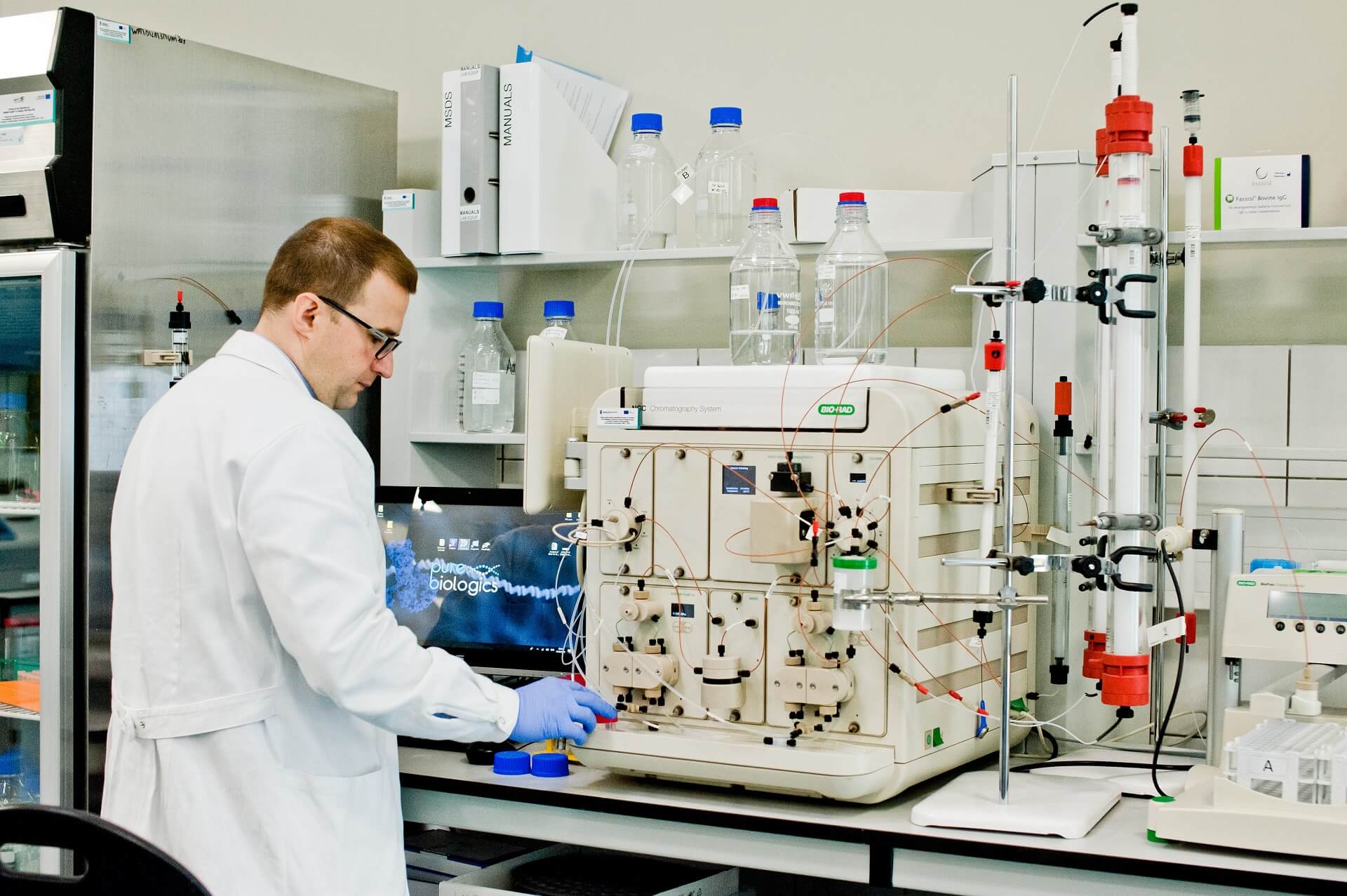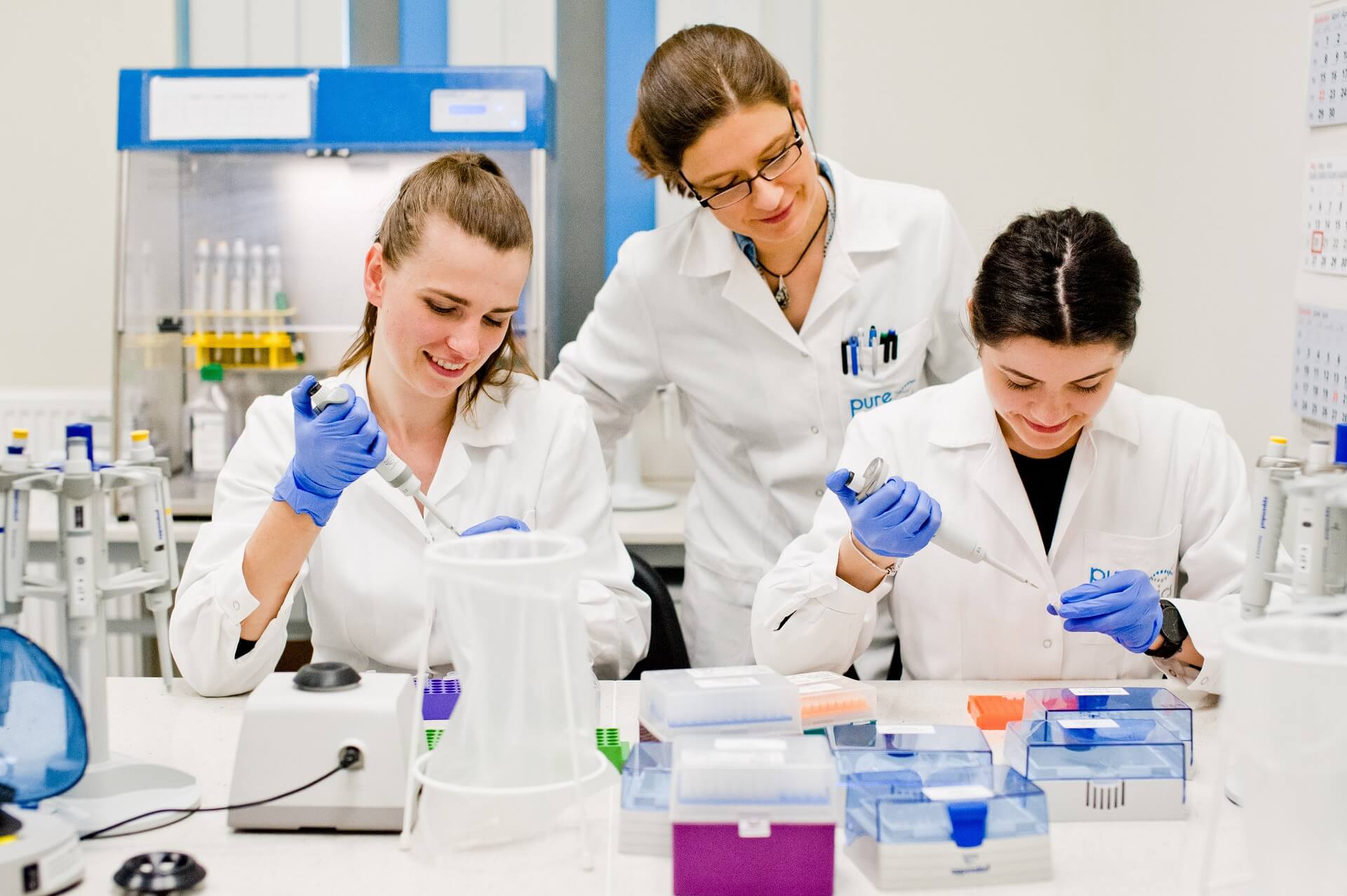PureApta
PureApta, an innovative platform, enables generating new active particles – genetically modified aptamers – to be used in new drugs and advanced medical diagnostics

 Project title
Project title
PureApta, an innovative modular service platform for the selection of modified aptamers with applications in diagnostics and therapy
 Name of Beneficiary/Beneficiaries
Name of Beneficiary/Beneficiaries
Pure Biologics S.A.
 Name of programme
Name of programme
SMART GROWTH OPERATIONAL PROGRAMME
 Competition
Competition
Fast Track
 Project value
Project value
PLN 2,327,629.00
 Funding value
Funding value
PLN1,807,003.00
 Project delivery period
Project delivery period
1 September 2016 – 28 February 2019
Meet our team

View the results of our work

What problem is addressed by the project?
Generating new aptamers through in vitro selection is inefficient with relatively low chances of success. With the PureApta platform, using chemically modified nucleotides and a range of modular techniques, scientists from Pure Biologics were able to significantly increase the efficiency of generating new active particles with desirable parameters.
Initially, our company provided services involving the production of recombinant proteins for large biotechnological and pharmaceutical companies. Several years ago, we focussed our interest on aptamers and decided to create something ours, that is to transform from a purely service company basing its activities on unique know-how, into a producer of a product-service based on the developed intellectual property.
Talking about the project, it is impossible to avoid specialist language: aptamers are molecules similar to antibodies but made of chains of compounds found in our DNA, i.e. nucleic acids. Aptamers differ from antibodies, which are proteins, but they can be used in a similar way – for instance as a tool for research, such as studies on neoplasms. The advantage of aptamers consists in their greater stability. Also, their chemical synthesis is easier (whereas antibodies have to be produced in cell cultures), which is associated with lower research costs. In short, aptamers can be tools for research, and in perspective also therapeutic molecules, or find applications in diagnostic tests – even the most popular, such as strip tests, the most popular of which is the pregnancy test. We can replace antibodies with aptamers in those tests. Pregnancy tests are popular and cheap, but there are also more complicated and expensive tests, whose prices can be largely reduced with aptamers. This naturally means greater availability and is ultimately associated with providing health protection to a broader group of recipients.
We are the only company in Poland dealing with aptamers, and there are only a few university groups conducting non-commercial research in the field. Aptamers are not commonly used on a global scale – there are several dozen companies dealing with a similar biochemical technology.
Co-funding granted by the NCBR from European Funds from the Smart Growth Operational Programme made it possible for us to scale up our operations. Biotechnological research is not cheap. We have already held first meetings and talks focusing on business rather than the scientific aspect. This is a breakthrough – we are entering the commercialisation phase of the project. At the same time – based on the assumption that we can do something for others, we can also do it for ourselves – we began to use the developed technology to produce our own therapeutic solutions. In addition, we are running two large projects based on aptamers, with a value of over a dozen million zlotys each, with a goal to create therapeutic solutions for rare diseases. This would not be possible without the first “PureApta” project.
Who uses the project results?
The PureApta platform will serve Pure Biologics, in the first place, for generating new active particles for its own R&D projects focused on new therapeutic medicinal products and, in a longer-term perspective, also drugs. Through its service model, the company is also able to deliver very competitive tools (new aptamers) to its clients developing, e.g., new diagnostic tests. Pure Biologics has already entered in talks with the first interested entities, and has been actively using PureApta in three R&D projects of its own.
What was the greatest challenge during project implementation?
The project launch entailed several challenges regarding work organisation, staff recruitment and budget management alongside conducting research and avoiding delays. Fortunately, the company was able to effectively meet those challenges. Following some initial difficulties, the project quickly gathered pace and its milestones were achieved as expected.
Our advice for other applicants
The assessment of projects made by NCBR is reliable and precise, and requires the applicants to take a realistic approach to their own projects. A considerable challenge, not only in cooperation with the Centre, is long-term planning of scientific research. Not everything can be predicted five years ahead: the characteristic feature of scientific research is that we do not know its results and are unable to predict all its outcomes. The results of intermediate stages determine the successive decisions regarding, e.g., the purchase of equipment, the hiring of staff, etc. Without taking anything away from the construction sector, we are not dealing with skyscraper construction, in which most things can be planned, from foundations and the underground parking lot to the viewing platform at the very top. Fortunately, NCBR is showing flexibility and understanding although a change of plans during the execution of the project requires considerable effort. I would recommend all applicants to be patient and ready for changes.
Practising science and simultaneously being able to put the outcomes of research in practice is a really interesting challenge. All members of our team, which now consists of a hundred people, share this view and the common passion.